Reichstag & Unter den Linden
It’s been burned, bombed, rebuilt, buttressed by the Berlin Wall, wrapped in fabric and, finally, adorned with a glass dome: this is the Reichstag, one of Berlin’s most iconic buildings and seat of the German parliament (Bundestag). Nearby, the Brandenburg Gate gives way to Unter den Linden, Berlin’s most elegant boulevard, which flaunts its Prussian pedigree with pride.
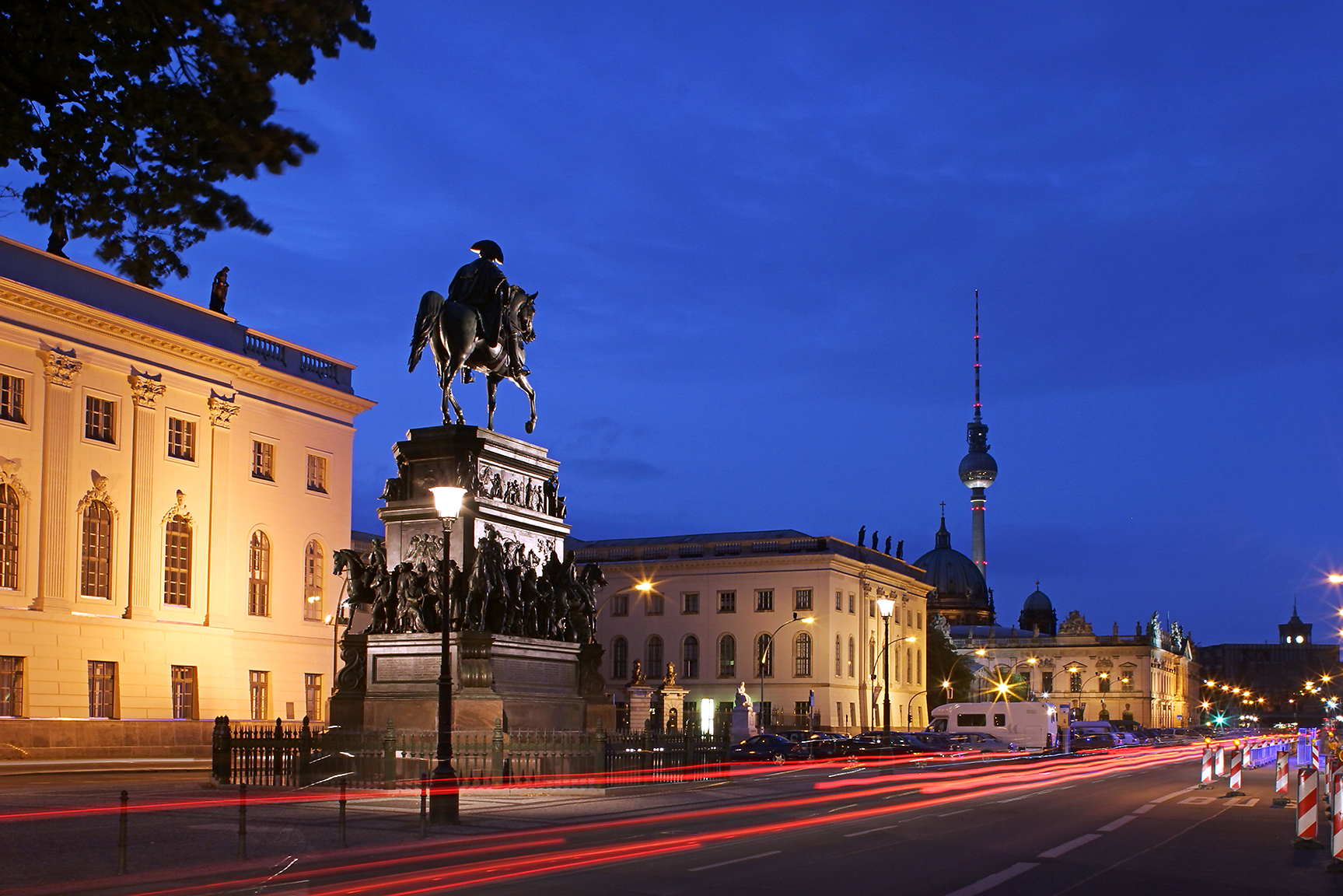
The Sights in a Day
![]() MBook an early timeslot for the lift ride to the Reichstag dome and get the lay of the land while meandering up its spiralling ramp. Back on solid ground, walk a few steps south to snap a classic picture of the Brandenburg Gate, then get lost in the haunting maze of the Holocaust Memorial. Ponder the source of such evil on the site of Hitler’s bunker before strolling over to Galeries Lafayette and the Friedrichstadtpassagen for some retail therapy, followed by lunch at Augustiner am Gendarmenmarkt.
MBook an early timeslot for the lift ride to the Reichstag dome and get the lay of the land while meandering up its spiralling ramp. Back on solid ground, walk a few steps south to snap a classic picture of the Brandenburg Gate, then get lost in the haunting maze of the Holocaust Memorial. Ponder the source of such evil on the site of Hitler’s bunker before strolling over to Galeries Lafayette and the Friedrichstadtpassagen for some retail therapy, followed by lunch at Augustiner am Gendarmenmarkt.
![]() RGrab a sweet chocolate treat at Fassbender & Rausch, take in the architectural harmony of Gendarmenmarkt and then follow Friedrichstrasse to Unter den Linden and continue north to the Tränenpalast to glean insight into the human toll the Berlin Wall took on citizens on both sides.
RGrab a sweet chocolate treat at Fassbender & Rausch, take in the architectural harmony of Gendarmenmarkt and then follow Friedrichstrasse to Unter den Linden and continue north to the Tränenpalast to glean insight into the human toll the Berlin Wall took on citizens on both sides.
![]() NTo compensate for the meaty lunch at Augustiner, enjoy a gourmet vegetarian dinner at Cookies Cream, then report to Bebel Bar or Tausend for a nightcap or keep the night going on the dance floor at Felix.
NTo compensate for the meaty lunch at Augustiner, enjoy a gourmet vegetarian dinner at Cookies Cream, then report to Bebel Bar or Tausend for a nightcap or keep the night going on the dance floor at Felix.
Top SightsReichstag & Government Quarter
The nexus of German political power snuggles neatly into the Spreebogen, a horseshoe-shaped bend in the Spree River. The historic anchor of the federal government quarter is the glass-domed Reichstag, which once rubbed against the western side of the Berlin Wall. It now forms part of the Band des Bundes (Ribbon of Federal Buildings), a series of glass-and-concrete buildings that symbolically link the former East and West Berlin across the Spree. North of the river looms the solar-panelled Hauptbahnhof (central train station).
MAP
GOOGLE MAP
www.bundestag.de; Platz der Republik 1, Vistors' Service: Scheidemannstrasse; ![]() hlift ride 8am-midnight, last entry 10pm, Visitors' Service 8am-8pm Apr-Oct, to 6pm Nov-Mar;
hlift ride 8am-midnight, last entry 10pm, Visitors' Service 8am-8pm Apr-Oct, to 6pm Nov-Mar; ![]() g100,
g100, ![]() bBundestag,
bBundestag, ![]() dHauptbahnhof, Brandenburger Tor
dHauptbahnhof, Brandenburger Tor
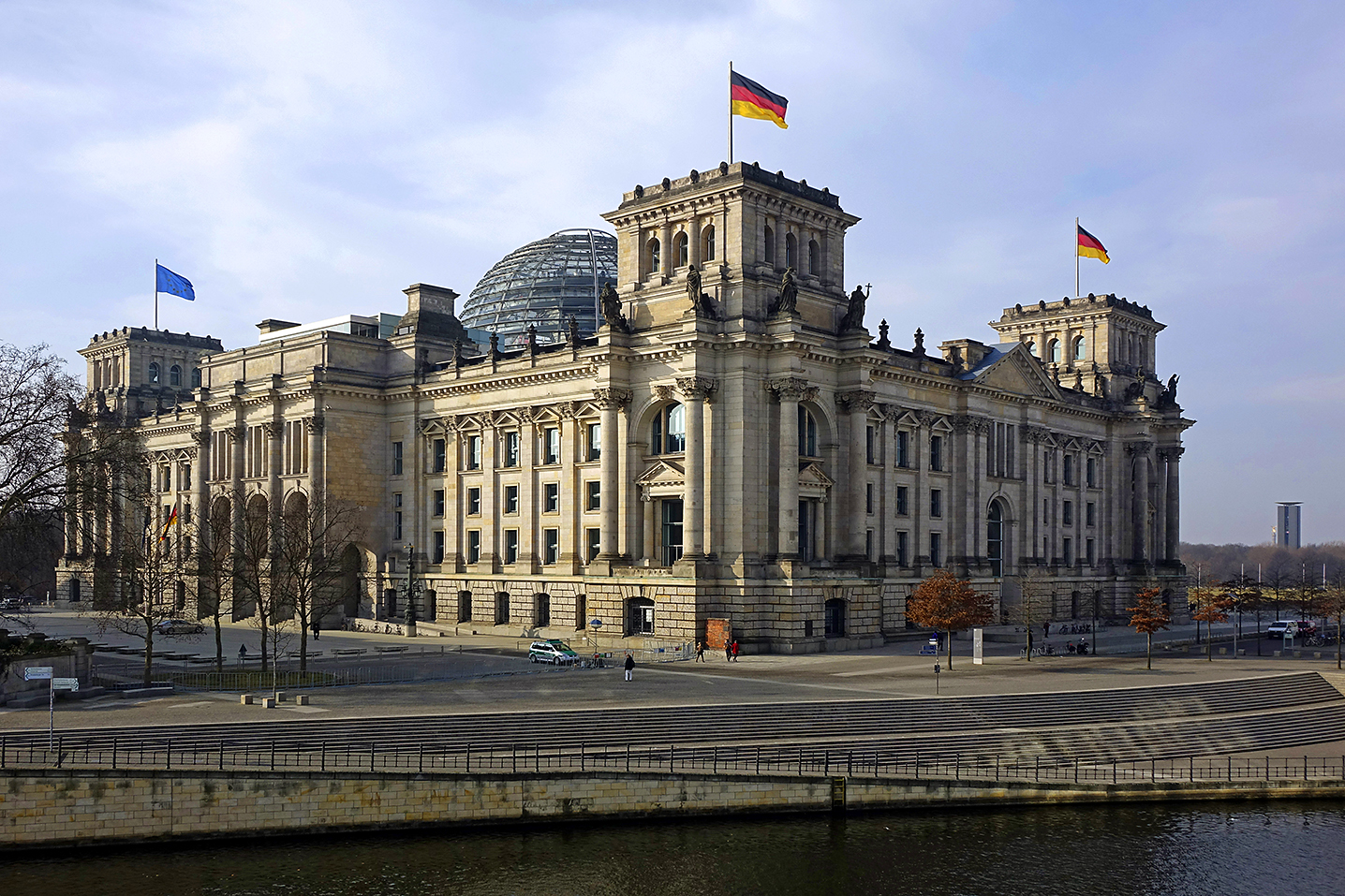
Don’t Miss
Reichstag Building
The four corner towers and mighty facade with the bronze dedication ‘Dem Deutschen Volke’ (To the German People; added in 1916) are the only original sections of the 1894 Reichstag. Lord Norman Foster, the architectural mastermind of the building’s post-reunification makeover, preserved only the historical shell and added the sparkling glass dome, Berlin’s newest symbol.
Reichstag Dome
Whoever said the best things in life are free might have been thinking of the lift ride up to the rooftop of the Reichstag. Enjoy the knockout views, then pick up a free auto-activated audioguide and learn about the building, Berlin landmarks and the workings of the Bundestag while following the ramp spiralling up and around the dome’s mirror-clad funnel.
Bundeskanzleramt
Germany’s chancellor keeps his or her office in the H-shaped Federal Chancellery designed by Axel Schultes and Charlotte Frank. From Moltkebrücke bridge or the northern Spree River promenade you can best appreciate the circular openings that inspired the building’s nickname, ‘washing machine’. Eduardo Chillida’s rusted-steel Berlin sculpture graces the forecourt.
Paul-Löbe-Haus
This vast glass-and-concrete building houses offices for the Bundestag’s parliamentary committees. In a visual symbol of reunification, a double footbridge over the Spree links the building to the Marie-Elisabeth-Lüders-Haus, home to the parliamentary library.
Top SightsBrandenburg Gate & Pariser Platz
A symbol of division during the Cold War, the landmark Brandenburg Gate (Brandenburger Tor) now epitomises German reunification and often serves as a photogenic backdrop for festivals, mega-concerts and New Year’s Eve parties. It was in Athens' Acropolis that Carl Gotthard Langhans found inspiration for the elegant triumphal arch, completed in 1791 as the royal city gate. It stands sentinel over Pariser Platz, a harmoniously proportioned square once again framed by embassies and bank buildings, as it was during its 19th-century heyday.
MAP
GOOGLE MAP
Pariser Platz; ![]() h24hr;
h24hr; ![]() bBrandenburger Tor,
bBrandenburger Tor, ![]() dBrandenburger Tor
dBrandenburger Tor
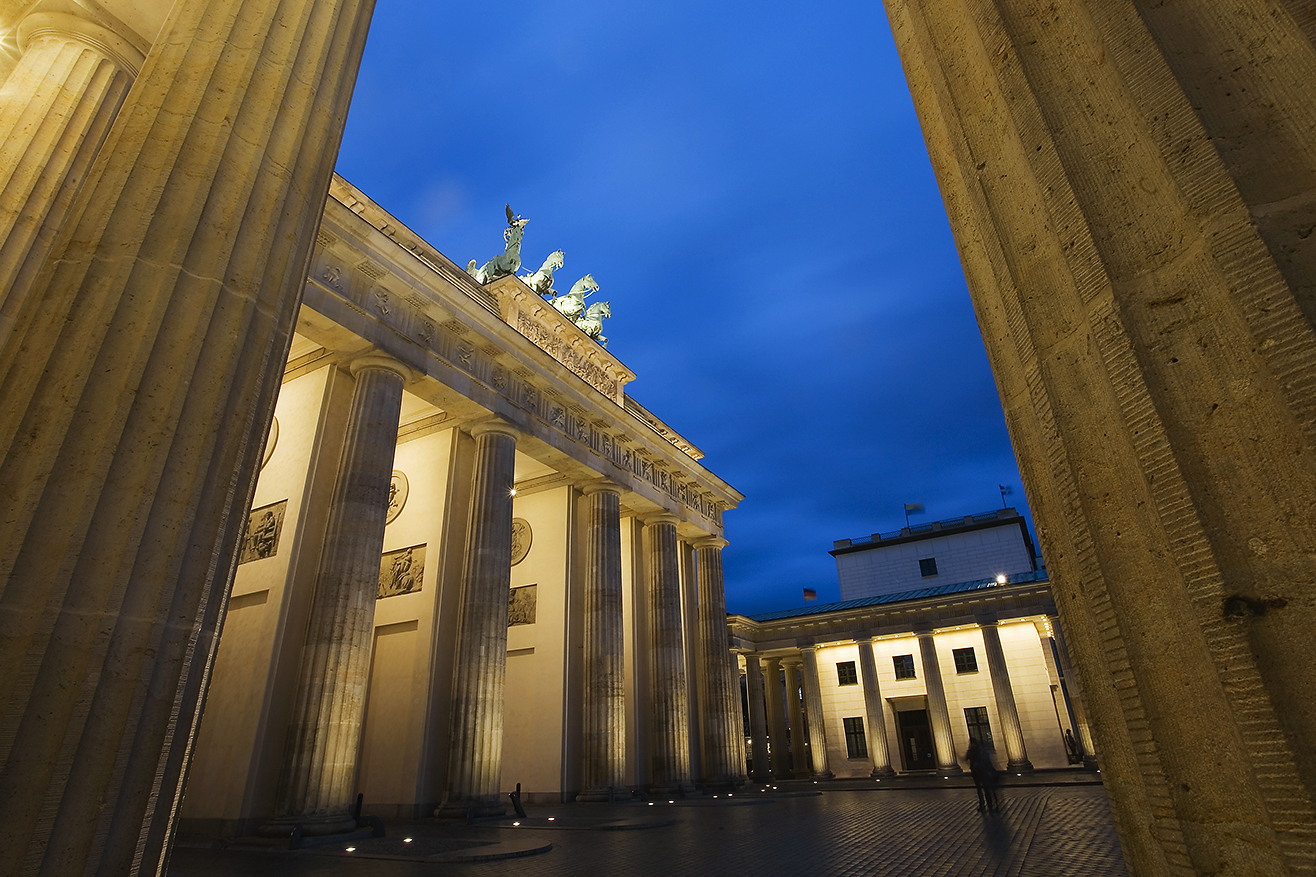
Don’t Miss
Quadriga
Crowning the Brandenburg Gate is Johann Gottfried Schadow’s sculpture of the winged goddess of victory piloting a chariot drawn by four horses. After trouncing Prussia in 1806, Napoleon kidnapped and held her hostage in Paris until she was freed by a gallant Prussian general in 1815.
Hotel Adlon
A near-replica of the 1907 original, the Adlon (
GOOGLE MAP
; ![]() %030-226 10; www.kempinski.com; Unter den Linden 77, Pariser Platz; r from €260;
%030-226 10; www.kempinski.com; Unter den Linden 77, Pariser Platz; r from €260; ![]() a
a![]() i
i![]() W
W![]() s;
s; ![]() bBrandenburger Tor,
bBrandenburger Tor, ![]() dBrandenburger Tor) is Berlin’s poshest hotel. It reportedly inspired the 1932 movie Grand Hotel, starring Greta Garbo. Now called the Adlon Kempinksi, it's still a favourite haunt of the famous, powerful and eccentric. Remember Michael Jackson dangling his baby out the window? It happened at the Adlon.
dBrandenburger Tor) is Berlin’s poshest hotel. It reportedly inspired the 1932 movie Grand Hotel, starring Greta Garbo. Now called the Adlon Kempinksi, it's still a favourite haunt of the famous, powerful and eccentric. Remember Michael Jackson dangling his baby out the window? It happened at the Adlon.
Academy of Arts
The only building on Pariser Platz with a glass facade is the Akademie der Künste (Academy of Arts;
GOOGLE MAP
; ![]() %200 571 000; www.adk.de; Pariser Platz 4; admission varies, free 3-7pm Tue;
%200 571 000; www.adk.de; Pariser Platz 4; admission varies, free 3-7pm Tue; ![]() hexhibits 11am-7pm Tue-Sun;
hexhibits 11am-7pm Tue-Sun; ![]() bBrandenburger Tor,
bBrandenburger Tor, ![]() dBrandenburger Tor), designed by Günter Behnisch. This is one of Berlin’s oldest cultural institutions, founded by King Friedrich I in 1696 as the Prussian Academy of Arts, and now offers many free readings, lectures, workshops and exhibits.
dBrandenburger Tor), designed by Günter Behnisch. This is one of Berlin’s oldest cultural institutions, founded by King Friedrich I in 1696 as the Prussian Academy of Arts, and now offers many free readings, lectures, workshops and exhibits.
DZ Bank
California-based deconstructivist Frank Gehry masterminded this bank (
GOOGLE MAP
; Pariser Platz 3; ![]() dBrandenburger Tor,
dBrandenburger Tor, ![]() XBrandenburger Tor), which packs a visual punch beyond those bland doors. You’ll only get as far as the foyer (open weekdays) but can glimpse the glass-covered atrium with its bizarre free-form sculpture that’s actually a conference room.
XBrandenburger Tor), which packs a visual punch beyond those bland doors. You’ll only get as far as the foyer (open weekdays) but can glimpse the glass-covered atrium with its bizarre free-form sculpture that’s actually a conference room.
Top SightsHolocaust Memorial
It took 17 years of discussion, planning and construction, but on 10 May 2005 the Memorial to the Murdered Jews of Europe was officially dedicated. Colloquially known as the Holocaust Memorial, it’s Germany’s central memorial to the Nazi-planned genocide of the Third Reich. In a space the size of a football field, New York architect Peter Eisenman created 2711 sarcophagi-like stelae rising in sombre silence from undulating ground. You’re free to access this labyrinth at any point and make your individual journey through it.
MAP
GOOGLE MAP
Memorial to the Murdered European Jews; ![]() %030-2639 4336; www.stiftung-denkmal.de; Cora-Berliner-Strasse 1; audioguide adult/concession €4/2;
%030-2639 4336; www.stiftung-denkmal.de; Cora-Berliner-Strasse 1; audioguide adult/concession €4/2; ![]() hfield 24hr, information centre 10am-8pm Tue-Sun Apr-Sep, to 7pm Oct-Mar, last entry 45min before closing;
hfield 24hr, information centre 10am-8pm Tue-Sun Apr-Sep, to 7pm Oct-Mar, last entry 45min before closing; ![]() bBrandenburger Tor,
bBrandenburger Tor, ![]() dBrandenburger Tor
dBrandenburger Tor
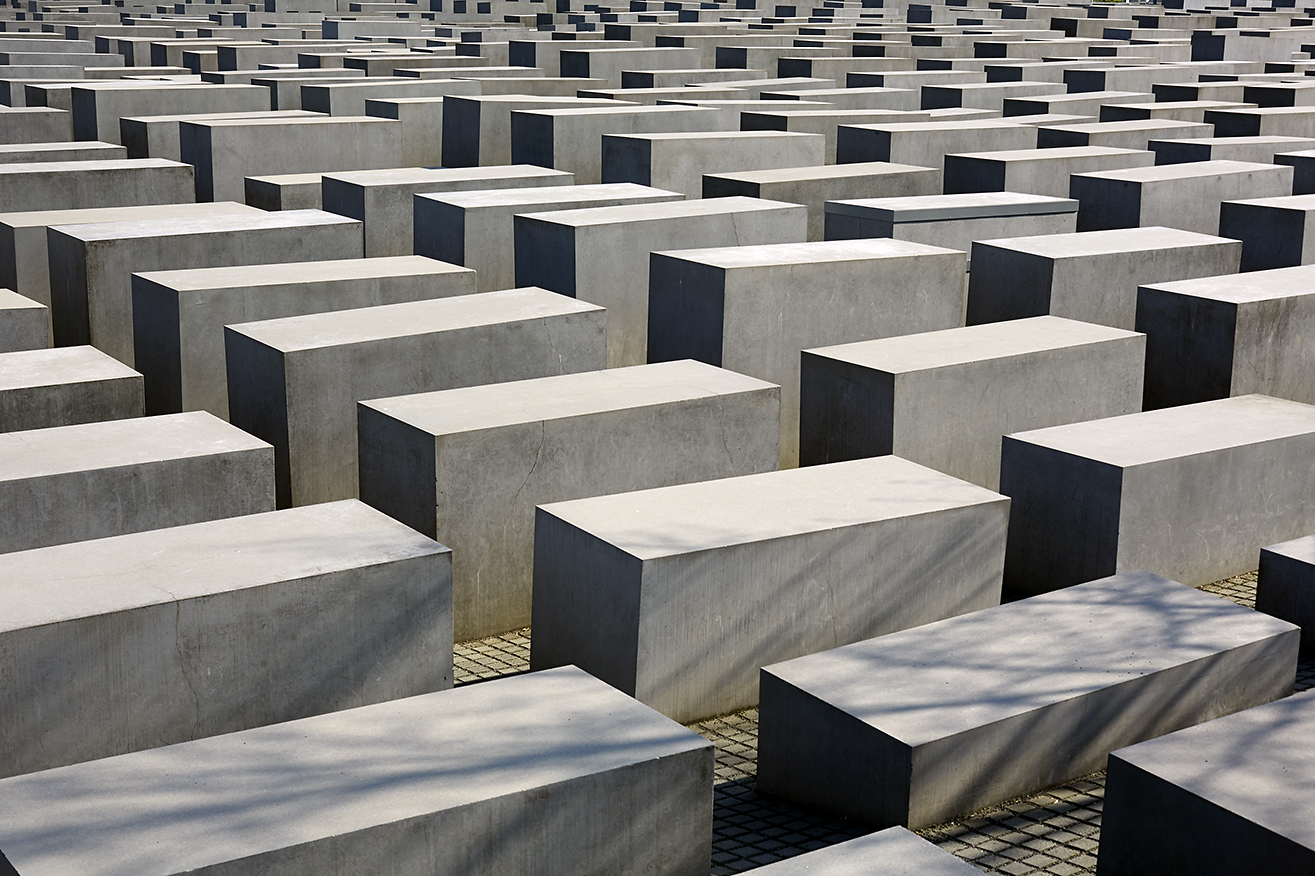
Don’t Miss
Field of Stelae
At first, Peter Eisenman’s massive grid of concrete columns of equal size at various heights may seem austere and unemotional, but take time to feel the coolness of the stone and contemplate the interplay of light and shadow. Then plunge into this maze of narrow passageways and give yourself over to a metaphorical sense of disorientation, confusion and claustrophobia.
Ort der Information
If the memorial itself feels rather abstract, the information centre movingly lifts the veil of anonymity from the six million Holocaust victims. A graphic timeline of Jewish persecution during the Third Reich is followed by a series of rooms documenting the fates of individuals and families. Poignant and heart-wrenching, these exhibits will leave no one untouched.
Room of Names
In this darkened and most visceral room in the information centre, the names and years of birth and death of Jewish victims are projected onto all four walls while a solemn voice reads their short biographies. It takes almost seven years to commemorate all known victims in this fashion.
Homosexuellen-Denkmal
The Gay Memorial trains the spotlight on the tremendous persecution and suffering of Europe’s gay community under the Nazis. Across from the Holocaust Memorial, it’s a freestanding 4m-high off-kilter concrete cube designed by Danish-Norwegian artists (and Berlin residents) Michael Elmgreen and Ingar Dragset. A looped video plays through a warped, narrow window.
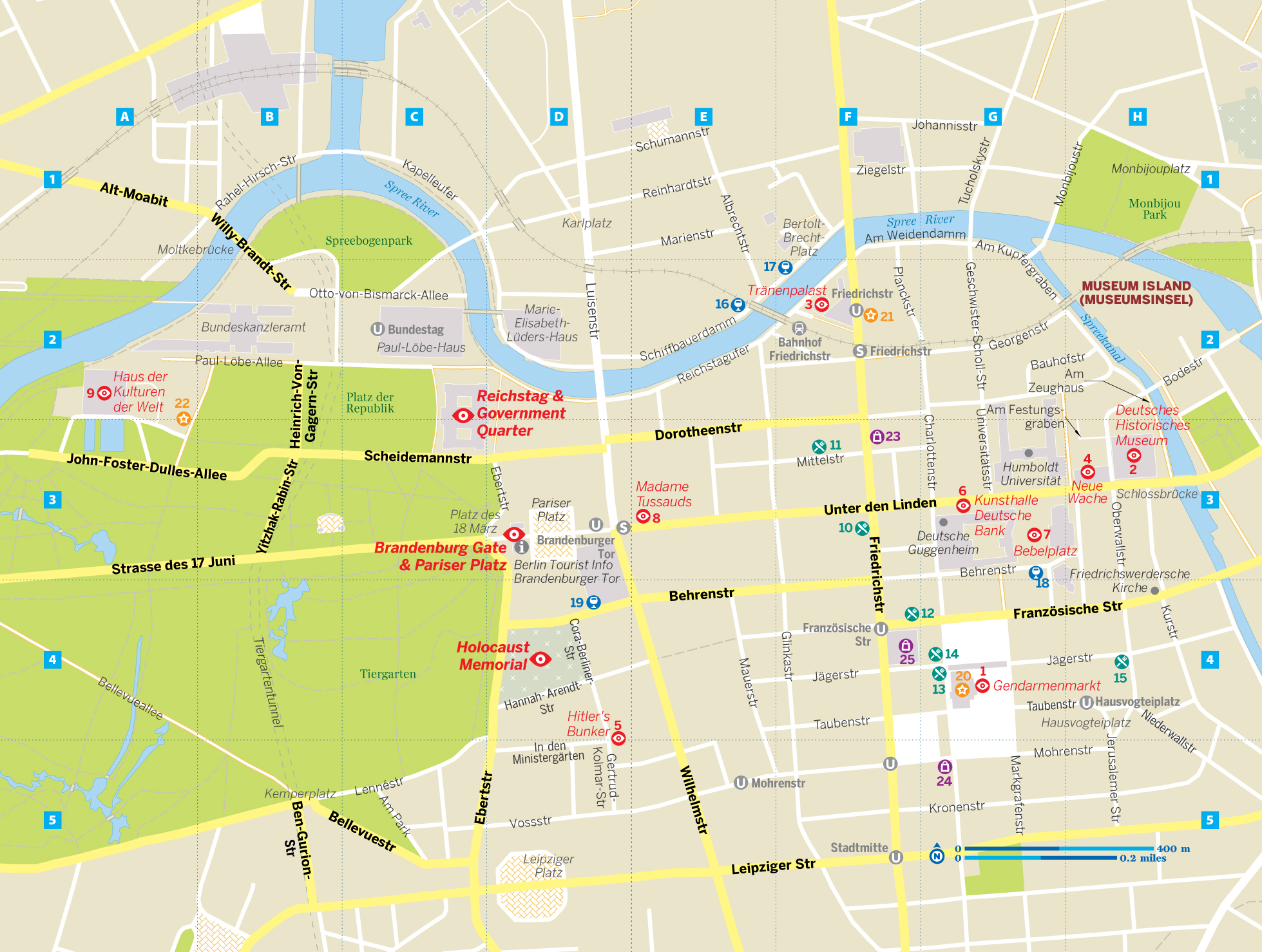
1Sights
5Eating
Sights
1GendarmenmarktSQUARE
Berlin's most graceful square is bookended by the domed 18th-century German and French cathedrals and punctuated by a grandly porticoed concert hall, the Konzerthaus. It was named for the Gens d’Armes, an 18th-century Prussian regiment consisting of French Huguenot immigrants whose story is chronicled in a museum inside the French cathedral. Climb the tower here for grand views of historic Berlin.
(![]() h24hr;
h24hr; ![]() bFranzösische Strasse, Stadtmitte)
bFranzösische Strasse, Stadtmitte)
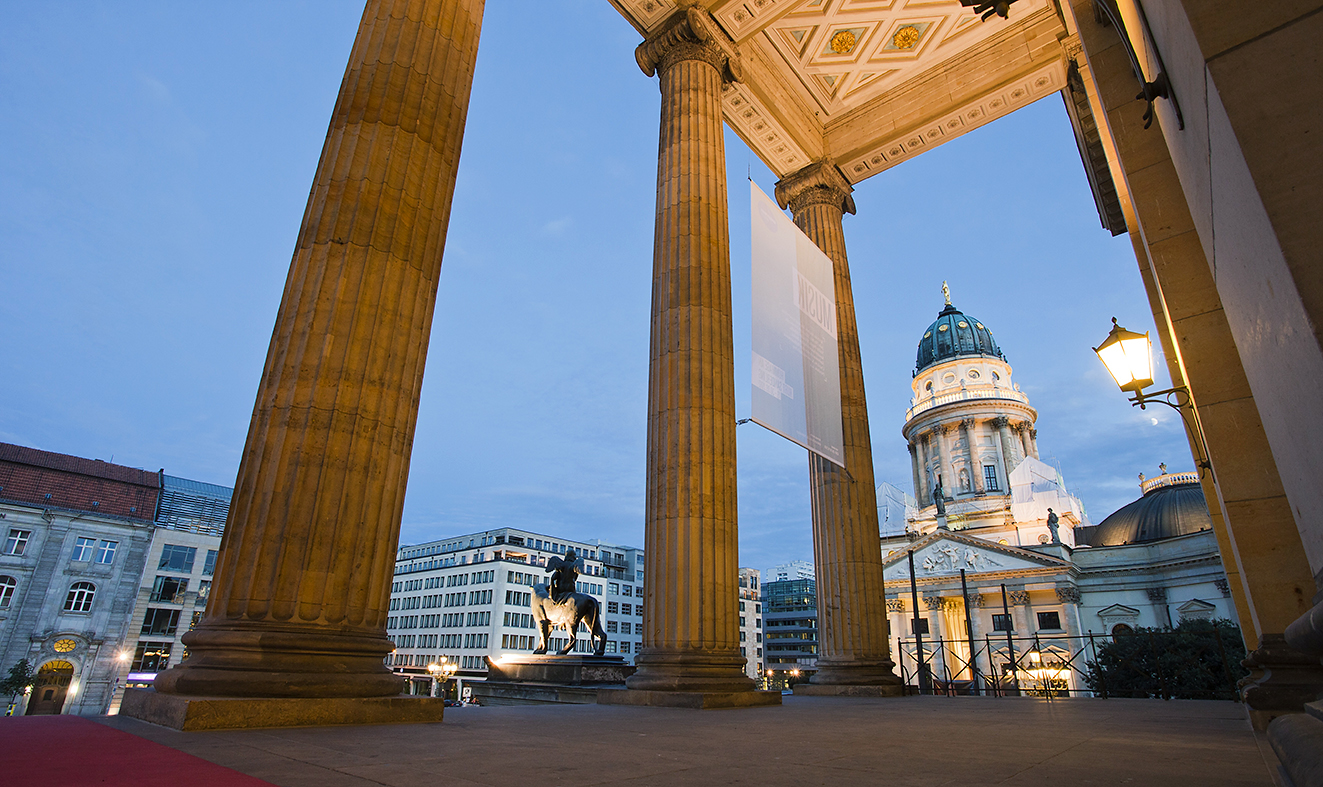
1Deutsches Historisches MuseumMUSEUM
This engaging museum zeroes in on 1500 years of German history in all its gore and glory; not in a nutshell but on two floors of a Prussian-era armoury. Check out the Nazi globe, the pain-wrecked faces of dying warrior sculptures in the courtyard, and the temporary exhibits in the boldly modern annex designed by IM Pei.
(![]() %030-203 040; www.dhm.de; Unter den Linden 2; adult/concession/under 18 €8/4/free;
%030-203 040; www.dhm.de; Unter den Linden 2; adult/concession/under 18 €8/4/free; ![]() h10am-6pm;
h10am-6pm; ![]() g100, 200,
g100, 200, ![]() bHausvogteiplatz,
bHausvogteiplatz, ![]() dHackescher Markt)
dHackescher Markt)
1TränenpalastMUSEUM
During the Cold War, tears flowed copiously in this glass-and-steel border-crossing pavilion where East Berliners had to bid adieu to family visiting from West Germany – hence its moniker 'Palace of Tears'. The exhibit uses original objects (including the claustrophobic passport control booths and a border auto-firing system), photographs and historical footage to document the division's social impact on the daily lives of Germans on both sides of the border.
(![]() %030-4677 7790; www.hdg.de; Reichstagufer 17;
%030-4677 7790; www.hdg.de; Reichstagufer 17; ![]() h9am-7pm Tue-Fri, 10am-6pm Sat & Sun;
h9am-7pm Tue-Fri, 10am-6pm Sat & Sun; ![]() bFriedrichstrasse,
bFriedrichstrasse, ![]() dFriedrichstrasse)
dFriedrichstrasse)
1Neue WacheMEMORIAL
This columned, templelike neoclassical structure (1818) was Karl Friedrich Schinkel's first Berlin commission. Originally a Prussian royal guardhouse, it is now an antiwar memorial whose austere interior is dominated by Käthe Kollwitz’ heart-wrenching sculpture of a mother cradling her dead soldier son.
(Unter den Linden 4; ![]() h10am-6pm;
h10am-6pm; ![]() g100, 200, TXL)
g100, 200, TXL)
1Hitler's BunkerHISTORIC SITE
Berlin was burning and Soviet tanks advancing relentlessly when Adolf Hitler committed suicide on 30 April 1945, alongside Eva Braun, his long-time female companion, hours after their marriage. Today, a parking lot covers the site, revealing its dark history only via an information panel with a diagram of the vast bunker network, construction data and the site's post-WWII history.
(cnr In den Ministergärten & Gertrud-Kolmar-Strasse; ![]() h24hr;
h24hr; ![]() bBrandenburger Tor,
bBrandenburger Tor, ![]() dBrandenburger Tor)
dBrandenburger Tor)
1Kunsthalle Deutsche BankGALLERY
This small exhibition hall is a platform for contemporary art, especially from emerging art centres in Africa, China, India and South America. The three to four exhibits per year (often in cooperation with international museums like the Tate Modern) seek to push artistic boundaries and examine the effects of a globalised society.
(![]() %030-202 0930; www.deutsche-bank-kunsthalle.de; Unter den Linden 13-15; adult/concession/child €4/3/free, free Mon;
%030-202 0930; www.deutsche-bank-kunsthalle.de; Unter den Linden 13-15; adult/concession/child €4/3/free, free Mon; ![]() h10am-8pm;
h10am-8pm; ![]() g100, 200,
g100, 200, ![]() bFranzösische Strasse)
bFranzösische Strasse)
1BebelplatzSQUARE, MEMORIAL
In 1933, books by Brecht, Mann, Marx and other ‘subversives’ went up in flames on this treeless square during the first full-blown public book burning, staged by the Nazi German Student League. Named for August Bebel, the cofounder of Germany's Social Democratic Party (SPD), it was first laid out in the 18th century under Frederick the Great.
(Bebelplatz; ![]() h24hr;
h24hr; ![]() g100, 200, TXL,
g100, 200, TXL, ![]() bHausvogteiplatz)
bHausvogteiplatz)
1Madame TussaudsMUSEUM
No celebrity in town to snare your stare? Don’t fret: at this legendary wax museum the world's biggest pop stars, Hollywood legends, sports heroes and historical icons stand still – very still – for you to snap their picture. Sure, it’s an expensive haven of kitsch and camp but where else can you have a candle-light dinner with George Clooney, play piano with Beethoven or test your IQ against Albert Einstein? Avoid wait times and save money by buying tickets online.
(![]() %01806-545 800; www.madametussauds.com/berlin; Unter den Linden 74; adult/child 3-14 €23.50/18.50;
%01806-545 800; www.madametussauds.com/berlin; Unter den Linden 74; adult/child 3-14 €23.50/18.50; ![]() h10am-7pm, to 8pm Aug, last admission 1hr before closing;
h10am-7pm, to 8pm Aug, last admission 1hr before closing; ![]() g100,
g100, ![]() bBrandenburger Tor,
bBrandenburger Tor, ![]() dBrandenburger Tor)
dBrandenburger Tor)
1Haus der Kulturen der WeltBUILDING
This highly respected cultural centre showcases contemporary non-European art, music, dance, literature, films and theatre, and also serves as a discussion forum on Zeitgeist-reflecting issues. The gravity-defying parabolic roof of Hugh Stubbins' extravagant building, designed as the American contribution to a 1957 architectural exhibition, is echoed by Henry Moore's sculpture Butterfly in the reflecting pool.
(House of World Cultures; ![]() %030-397 870; www.hkw.de; John-Foster-Dulles-Allee 10; cost varies;
%030-397 870; www.hkw.de; John-Foster-Dulles-Allee 10; cost varies; ![]() hexhibits 11am-7pm Wed-Mon;
hexhibits 11am-7pm Wed-Mon; ![]() g100,
g100, ![]() bBundestag,
bBundestag, ![]() dHauptbahnhof)
dHauptbahnhof)

UnderstandBerlin under the Swastika
The rise to power of Adolf Hitler and the NSDAP (Nazi Party) in January 1933 had instant and far-reaching consequences for all of Germany. Within three months, all non-Nazi parties, organisations and labour unions had been outlawed and many political opponents, intellectuals and artists detained without trial. Jews, of course, were a main target from the start but the horror escalated for them during the Kristallnacht pogroms on 9 November 1938, when Nazi thugs desecrated, burned and demolished synagogues and Jewish cemeteries, property and businesses across the country. Jews had begun to emigrate after 1933, but this event set off a stampede.
The fate of those Jews who stayed behind is well known: the systematic, bureaucratic and meticulously documented annihilation in death camps, mostly in Nazi-occupied territories in Eastern Europe. Sinti and Roma (gypsies), political opponents, priests, gays and habitual criminals were targeted as well. Of the roughly seven million people who were sent to concentration camps, only 500,000 survived.
The Battle of Berlin
With the Normandy invasion of June 1944, Allied troops arrived in formidable force on the European mainland, supported by unrelenting air raids on Berlin and most other German cities. The final Battle of Berlin began in mid-April 1945, with 1.5 million Soviet troops barrelling towards the city from the east. On 30 April, when the fighting reached the government quarter, Hitler and his long-time companion Eva Braun committed suicide in their bunker. As their bodies were burning, Red Army soldiers raised the Soviet flag above the Reichstag.
Defeat & Aftermath
The Battle of Berlin ended on 2 May, with Germany’s unconditional surrender six days later. The fighting had taken an enormous toll on Berlin and its people. Much of the city lay in smouldering rubble and at least 125,000 Berliners had lost their lives. In July 1945, the leaders of the Allies met in Potsdam to carve up Germany and Berlin into four zones of occupation controlled by Britain, the USA, the USSR and France.
UnderstandThe Reichstag in History
Germany’s federal parliament building has witnessed many milestones in the country’s history. After WWI, Philipp Scheidemann proclaimed the German Republic from one of its windows. The Reichstag fire in February 1933 allowed Adolf Hitler to blame the communists and helped catapult him to power. A dozen years later, victorious Red Army troops raised the Soviet flag on the bombed-out building, which stood damaged and empty on the western side of the Berlin Wall throughout the Cold War.
In the 1980s, megastars such as David Bowie, Pink Floyd and Michael Jackson performed concerts in front of the building. After the collapse of the Berlin Wall, reunification was enacted in the Reichstag in 1990. Five years later, it made headlines again when the artist couple Christo and Jeanne-Claude wrapped it in fabric. Lord Norman Foster began renovations shortly thereafter.
Eating
5Cookies CreamVEGETARIAN€€€
Kudos if you can locate this chic herbivore haven right away. Hint: it's upstairs past a giant chandelier in the service alley of the Westin Grand Hotel. Ring the bell to enter an elegantly industrial loft for flesh-free, flavour-packed dishes from current-harvest ingredients.
(![]() %030-2749 2940; www.cookiescream.com; Behrenstrasse 55; mains €22, 3-course menu €39;
%030-2749 2940; www.cookiescream.com; Behrenstrasse 55; mains €22, 3-course menu €39; ![]() hfrom 7pm Tue-Sat;
hfrom 7pm Tue-Sat; ![]() v;
v; ![]() bFranzösische Strasse)
bFranzösische Strasse)
5Ishin – MittelstrasseJAPANESE€€
Look beyond the cafeteria-style get-up to sushi glory for minimal prices. Combination platters are ample and affordable, especially during happy hour (all day Wednesday and Saturday, until 4pm on other days). If you're not in the mood for raw fish, tuck into a steaming rice bowl topped with meat and/or veg. Nice touch: the unlimited free green tea.
(![]() %030-2067 4829; www.ishin.de; Mittelstrasse 24; sushi platter €8-19.50, bowl €5-13;
%030-2067 4829; www.ishin.de; Mittelstrasse 24; sushi platter €8-19.50, bowl €5-13; ![]() h11am-10pm Mon-Sat;
h11am-10pm Mon-Sat; ![]() bFriedrichstrasse,
bFriedrichstrasse, ![]() dFriedrichstrasse)
dFriedrichstrasse)
5BorchardtFRENCH€€€
Jagger, Clooney and Redford are among the celebs who have tucked into dry-aged steaks and plump oysters in the marble-pillared dining hall of this Berlin institution, established in 1853 by a caterer to the Kaiser. No dish, however, moves as fast as the Wiener Schnitzel, a wafer-thin slice of breaded veal fried to crisp perfection.
(![]() %030-8188 6262; Französische Strasse 47; 3-course business lunch €15, dinner mains €20-40;
%030-8188 6262; Französische Strasse 47; 3-course business lunch €15, dinner mains €20-40; ![]() h11.30am-1am;
h11.30am-1am; ![]() bFranzösische Strasse)
bFranzösische Strasse)
5Augustiner am GendarmenmarktGERMAN€€
Tourists, concert-goers and hearty-food lovers rub shoulders at rustic tables in this surprisingly authentic Bavarian beer hall. Soak up the down-to-earth vibe right along with a mug of full-bodied Augustiner brew. Sausages, roast pork and pretzels provide rib-sticking sustenance, but there's also plenty of lighter (even meat-free) fare as well as good-value lunch specials.
(![]() %030-2045 4020; www.augustiner-braeu-berlin.de; Charlottenstrasse 55; mains €6-19;
%030-2045 4020; www.augustiner-braeu-berlin.de; Charlottenstrasse 55; mains €6-19; ![]() h10am-2am;
h10am-2am; ![]() bFranzösische Strasse)
bFranzösische Strasse)
5Soya CosplayASIAN€€
At this stylish contender, colourful lanterns and nifty lamps create cosiness without kitsch, and dishes on the menu are veritable aroma explosions. The pork belly beautifully plays off pungent Asian herbs, shrimp balls are perked up with wasabi mayonnaise, and even the jellyfish carpaccio is delicate rather than slimy.
(![]() %030-2062 9093; www.soyacosplay.com; Jägerstrasse 59-60; plates €6-22;
%030-2062 9093; www.soyacosplay.com; Jägerstrasse 59-60; plates €6-22; ![]() hnoon-midnight Mon-Sat, 5pm-midnight Sun;
hnoon-midnight Mon-Sat, 5pm-midnight Sun; ![]() bFranzösische Strasse)
bFranzösische Strasse)
5ChippsVEGETARIAN€€
Well worth a little detour, this crisp corner spot with show kitchen and panorama windows turns heads with yummy cooked breakfasts (served all day on Sundays), build-your-own salads and creative hot specials that spin regional, seasonal ingredients into taste-bud magic. Most dishes are vegetarian, some are vegan.
(![]() %030-3644 4588; www.chipps.eu; Jägerstrasse 35; mains €11-17;
%030-3644 4588; www.chipps.eu; Jägerstrasse 35; mains €11-17; ![]() h9am-11pm Mon-Sat, 9am-5pm Sun;
h9am-11pm Mon-Sat, 9am-5pm Sun; ![]() v;
v; ![]() bHausvogteiplatz)
bHausvogteiplatz)
Drinking
6TausendBAR
No sign, no light, no bell, just an anonymous steel door tucked under a railway bridge leads to one of Berlin's chicest bars. Behind it, flirty frocks sip raspberry mojitos alongside London Mule–cradling three-day stubbles. The eye-catching decor channels '80s glam while DJs and bands fuel the vibe.
(www.tausendberlin.com; Schiffbauerdamm 11; ![]() hfrom 7.30pm Tue-Sat;
hfrom 7.30pm Tue-Sat; ![]() bFriedrichstrasse,
bFriedrichstrasse, ![]() dFriedrichstrasse)
dFriedrichstrasse)
6Berliner RepublikPUB
Just as in a mini–stock exchange, the cost of drinks fluctuates with demand at this raucous riverside pub. Everyone goes Pavlovian when a heavy brass bell rings, signalling rock-bottom prices. You won't be hoisting mugs with many Berliners here, but it's a fun spot nonetheless.
(![]() %030-3087 2293; www.die-berliner-republik.de; Schiffbauerdamm 8;
%030-3087 2293; www.die-berliner-republik.de; Schiffbauerdamm 8; ![]() h10am-6am;
h10am-6am; ![]() bFriedrichstrasse,
bFriedrichstrasse, ![]() dFriedrichstrasse)
dFriedrichstrasse)
6Bebel BarBAR
Plush luxury is the mojo of the Bebel Bar at the Hotel Rome, where the Mad Men crew would fit right in. Try a Roccos Mule, a heady mix of brandy, plum, fresh raspberries, lemon and spicy ginger. On balmy nights, the action moves to the rooftop terrace.
(![]() %030-460 6090; www.hotelderome.com; Behrenstrasse 37;
%030-460 6090; www.hotelderome.com; Behrenstrasse 37; ![]() h9am-1am;
h9am-1am; ![]() g100, 200, TXL,
g100, 200, TXL, ![]() bHausvogteiplatz)
bHausvogteiplatz)
6FelixCLUB
Once past the velvet rope of this swanky club, you too can shake your booty to high-octane hip-hop, dance and disco beats, sip Champagne cocktails, watch the crowd from the gallery and flirt up a storm. Women get free entry and a glass of Prosecco until midnight on Mondays, while the worker-bee brigade kicks loose on after-work Thursdays.
(![]() %030-301 117 152; www.felix-clubrestaurant.de; Behrenstrasse 72;
%030-301 117 152; www.felix-clubrestaurant.de; Behrenstrasse 72; ![]() hfrom 11pm Mon, Fri & Sat, from 7pm Thu;
hfrom 11pm Mon, Fri & Sat, from 7pm Thu; ![]() bBrandenburger Tor,
bBrandenburger Tor, ![]() dBrandenburger Tor)
dBrandenburger Tor)
Entertainment
3Konzerthaus BerlinCLASSICAL MUSIC
This top-ranked concert hall – a Schinkel design from 1821 – counts the Konzerthaus-Orchester as its 'house band' but also hosts international soloists, thematic concert cycles, children's events and concerts by the Rundfunk-Sinfonieorchester Berlin. Guided tours (€3, in German) at 1pm on Saturdays.
(![]() %tickets 030-203 092 101; www.konzerthaus.de; Gendarmenmarkt 2;
%tickets 030-203 092 101; www.konzerthaus.de; Gendarmenmarkt 2; ![]() bStadtmitte, Französische Strasse)
bStadtmitte, Französische Strasse)
3AdmiralspalastPERFORMING ARTS
This beautifully restored 1920s 'palace' stages crowd-pleasing plays, concerts and comedy shows in its glamorous historic main hall. More intimate programs are presented on the smaller studio stage on the 4th floor. Most performances are suitable for non-German speakers, but do check ahead.
(![]() %tickets 030-2250 7000; www.admiralspalast.de; Friedrichstrasse 101;
%tickets 030-2250 7000; www.admiralspalast.de; Friedrichstrasse 101; ![]() bFriedrichstrasse,
bFriedrichstrasse, ![]() jM1,
jM1, ![]() dFriedrichstrasse)
dFriedrichstrasse)
3Tipi am KanzleramtCABARET
Tipi stages a year-round program of high-calibre cabaret, dance, acrobatics, musical comedy and magic shows starring German and international artists. It's all staged in a huge and festively decorated permanent tent stationed between the Federal Chancellery and the House of World Cultures on the edge of Tiergarten park. Pre-show dinner is available.
(![]() %tickets 030-3906 6550; www.tipi-am-kanzleramt.de; Grosse Querallee;
%tickets 030-3906 6550; www.tipi-am-kanzleramt.de; Grosse Querallee; ![]() g100,
g100, ![]() bBundestag,
bBundestag, ![]() dHauptbahnhof)
dHauptbahnhof)
Top TipFree Concerts
The gifted students at Berlin’s top-rated classical music academy, the Hochschule für Musik Hanns Eisler (
GOOGLE MAP
; ![]() %tickets 030-203 092 101; www.hfm-berlin.de; Charlottenstrasse 55;
%tickets 030-203 092 101; www.hfm-berlin.de; Charlottenstrasse 55; ![]() bStadtmitte, Französische Strasse), showcase their talents in several recitals weekly, most of them for free or low-cost. They’re held either on the main campus or nearby in the Neuer Marstall at Schlossplatz 7.
bStadtmitte, Französische Strasse), showcase their talents in several recitals weekly, most of them for free or low-cost. They’re held either on the main campus or nearby in the Neuer Marstall at Schlossplatz 7.
Shopping
7Dussmann – Das KulturkaufhausBOOKS, MUSIC
It’s easy to lose track of time in this cultural playground with wall-to-wall books, DVDs and CDs, leaving no genre unaccounted for. Bonus points for the free reading-glass rentals, downstairs cafe and performance space used for concerts, political discussions and high-profile book readings and signings.
(![]() %030-2025 1111; www.kulturkaufhaus.de; Friedrichstrasse 90;
%030-2025 1111; www.kulturkaufhaus.de; Friedrichstrasse 90; ![]() h9am-midnight Mon-Fri, to 11.30pm Sat;
h9am-midnight Mon-Fri, to 11.30pm Sat; ![]() bFriedrichstrasse,
bFriedrichstrasse, ![]() dFriedrichstrasse)
dFriedrichstrasse)
7Fassbender & RauschFOOD
If the Aztecs thought of chocolate as the elixir of the gods, then this emporium of truffles and pralines must be heaven. Bonus: the chocolate volcano and giant replicas of Berlin landmarks. The upstairs cafe-restaurant has views of Gendarmenmarkt and serves sinful drinking chocolates and cakes as well as dishes prepared and seasoned with cocoa.
(![]() %030-757 882 440; www.fassbender-rausch.com; Charlottenstrasse 60;
%030-757 882 440; www.fassbender-rausch.com; Charlottenstrasse 60; ![]() h10am-8pm Mon-Sat, 11am-8pm Sun;
h10am-8pm Mon-Sat, 11am-8pm Sun; ![]() bStadtmitte)
bStadtmitte)
7Galeries LafayetteDEPARTMENT STORE
Stop by the Berlin branch of the exquisite French fashion emporium if only to check out the show-stealing interior (designed by Jean Nouvel, no less), centred on a huge glass cone shimmering with kaleidoscopic intensity. Around it wrap three circular floors filled with fancy fashions, fragrances and accessories, while glorious gourmet treats await downstairs in the food hall.
(![]() %030-209 480; www.galerieslafayette.de; Friedrichstrasse 76-78;
%030-209 480; www.galerieslafayette.de; Friedrichstrasse 76-78; ![]() h10am-8pm Mon-Sat;
h10am-8pm Mon-Sat; ![]() bFranzösische Strasse)
bFranzösische Strasse)